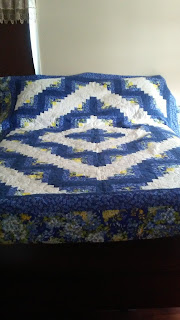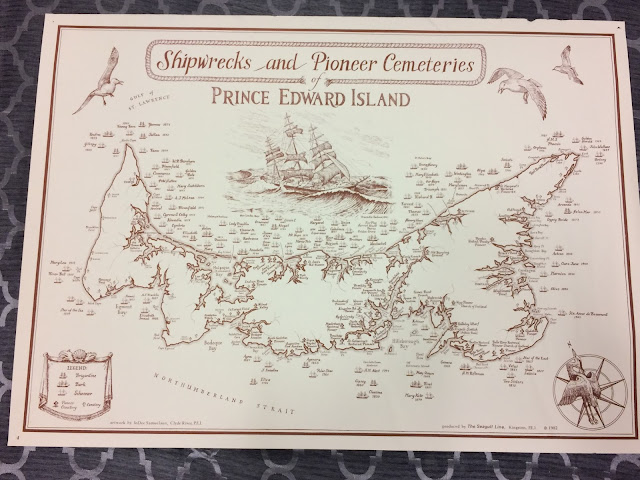Heritage as a Creative Industry
Before I get into today's topic, I wanted to thank you all for reading my first post last week! I hope this post keeps your interest. Next week, I am going to focus on a historical event in PEI history. But I wanted to talk about heritage as a creative industry because, for those of you who do not know, our provincial government published its Cultural Strategy which focuses on the creative industries on the Island.
As someone working in the heritage sector, I can easily see how heritage is a creative industry. However, not everyone sees heritage as very creative. My hope with this posting is to show why heritage is a creative industry!
So, what is a creative industry?
The answer to this will vary depending on who you ask. Some answers may be clear, such as "an industry that makes creative things and includes film, art, crafts, and music."
But industries that people may not always associate with being a creative industry include libraries, museums, or writing.
Creative is a broad term, associated with other terms like inventive, innovative, original, fun, and clever. History and heritage are usually not the first thing that comes to mind. Yet, heritage is a creative industry.
Let's break it down.
While the role of museums has changed over time, they are still associated with three key roles:
1. Collecting artefacts
2. Preserving artefacts
3. Exhibiting artefacts
Let's focus on exhibiting artefacts. Do you know what goes into creating an exhibition? If not, let me give you some clues. Once you have decided what your exhibit is going to be about (which can take a while to do) you have to consider:
How are you going to obtain artefacts - are you doing a call for submissions (common in art shows), getting a loan from another museum or private collector, or are you finding artefacts in your own collection?
Which ones are you going to display - do you have too many artefacts that connect to your theme? If so, you have to decide which ones to cut. You have to decide which ones tell the story the best, which could take a lot of research.
How are you going to display your artefacts - Do you want to tell the story based on subthemes, chronologically, geographically, etc. But also consider your space, do you have to design around a feature of the building, lighting, a draft, benches/seating, open or closed display cases, electrical outlets if you are using technology. . . This can take a long time and multiple floor plans! You may feel like an amateur interior designer by the end.
Consider the image above. I was co-curator for this show in Toronto and the use of media meant the television had to be on a wall that could hold its weight and have reasonably close access to an outlet (you want to hide extension cords as much as possible). This television played two videos, totalling over ten minutes. Most people will not want to stand there for ten minutes, so we had to consider seating.
How much text are you going to include - are you going to use text panels? How much information are you going to include on your artefact labels?
Museum designers have a lot to take into account. And they do it all on a budget!
And that is just creating the exhibit. But what about exhibit features. Many museums are coming up with fun ways to interact with visitors and have some hands-on aspects in their exhibits. At the Wood Islands Lighthouse, for example, you can practice tieing fishing knots.
An activity does not have to be complex to be fun and creative. Plus, all this does not even go into the different programs that can accompany an exhibit!
So I hope I have convinced you that heritage and museums are a creative industry. If there is a topic you want me to cover, just let me know and I'll see you all again next week.
As someone working in the heritage sector, I can easily see how heritage is a creative industry. However, not everyone sees heritage as very creative. My hope with this posting is to show why heritage is a creative industry!
So, what is a creative industry?
The answer to this will vary depending on who you ask. Some answers may be clear, such as "an industry that makes creative things and includes film, art, crafts, and music."
 |
| My Mom's newest quilt |
But industries that people may not always associate with being a creative industry include libraries, museums, or writing.
Creative is a broad term, associated with other terms like inventive, innovative, original, fun, and clever. History and heritage are usually not the first thing that comes to mind. Yet, heritage is a creative industry.
Let's break it down.
While the role of museums has changed over time, they are still associated with three key roles:
1. Collecting artefacts
2. Preserving artefacts
3. Exhibiting artefacts
Let's focus on exhibiting artefacts. Do you know what goes into creating an exhibition? If not, let me give you some clues. Once you have decided what your exhibit is going to be about (which can take a while to do) you have to consider:
How are you going to obtain artefacts - are you doing a call for submissions (common in art shows), getting a loan from another museum or private collector, or are you finding artefacts in your own collection?
Which ones are you going to display - do you have too many artefacts that connect to your theme? If so, you have to decide which ones to cut. You have to decide which ones tell the story the best, which could take a lot of research.
How are you going to display your artefacts - Do you want to tell the story based on subthemes, chronologically, geographically, etc. But also consider your space, do you have to design around a feature of the building, lighting, a draft, benches/seating, open or closed display cases, electrical outlets if you are using technology. . . This can take a long time and multiple floor plans! You may feel like an amateur interior designer by the end.
 |
| Laugh/Think: Playful Contemplations, March 2017. Artworks by Valerie Carew |
Consider the image above. I was co-curator for this show in Toronto and the use of media meant the television had to be on a wall that could hold its weight and have reasonably close access to an outlet (you want to hide extension cords as much as possible). This television played two videos, totalling over ten minutes. Most people will not want to stand there for ten minutes, so we had to consider seating.
How much text are you going to include - are you going to use text panels? How much information are you going to include on your artefact labels?
Museum designers have a lot to take into account. And they do it all on a budget!
And that is just creating the exhibit. But what about exhibit features. Many museums are coming up with fun ways to interact with visitors and have some hands-on aspects in their exhibits. At the Wood Islands Lighthouse, for example, you can practice tieing fishing knots.
An activity does not have to be complex to be fun and creative. Plus, all this does not even go into the different programs that can accompany an exhibit!
So I hope I have convinced you that heritage and museums are a creative industry. If there is a topic you want me to cover, just let me know and I'll see you all again next week.



Comments
Post a Comment